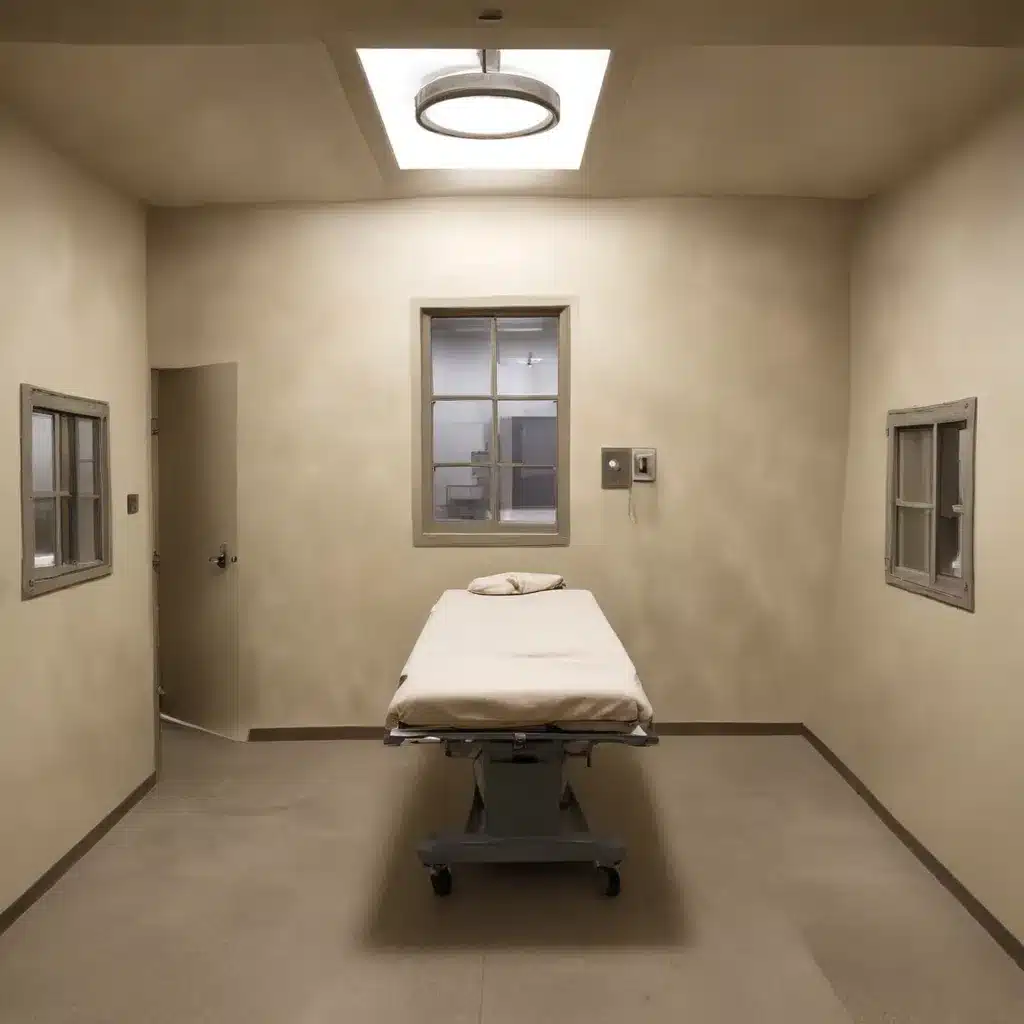The Idaho Department of Correction (IDOC) is currently undertaking a significant renovation project at the Idaho Maximum Security Institution (IMSI) to overhaul its execution chamber. This change comes on the heels of a failed execution attempt in February 2024, where the medical team was unable to establish an intravenous (IV) line to carry out the lethal injection of 74-year-old inmate Thomas Creech.
Prison Operations
IMSI, located south of Boise, houses Idaho’s male death row inmates and serves as the site for all state-sanctioned executions. The facility’s F Block is the designated area where these procedures take place. IDOC operates IMSI with the primary goals of safely housing the state’s most violent offenders while upholding the law, including carrying out court-ordered capital sentences.
The renovations currently underway aim to enhance the prison’s capacity to perform executions, both through lethal injection and the newly authorized firing squad method. This overhaul represents a significant investment, with the initial phase costing $313,915 for design, engineering, and initial construction. Additional funding, estimated at $952,589, will be required for the full upgrades to accommodate both execution modalities.
Execution Procedures
Idaho’s execution protocols have historically relied on establishing peripheral IV access – inserting a catheter into a vein close to the skin’s surface, typically in the arm or hand. However, the failed attempt on Creech exposed limitations in this approach, as the medical team was unable to successfully insert an IV after trying eight different entry points on his body.
In response, IDOC is now implementing a two-step process for future executions. First, the condemned individual will be brought to a newly constructed execution preparation room, where the medical team will assess their vein access. If peripheral IV establishment proves unfeasible, they will instead attempt to insert a central line – a catheter placed into a major vein, often in the chest, neck, or groin area. This alternative method is commonly used in healthcare settings when standard IV access is difficult.
IDOC has stated that these changes “enhance the state’s ability to carry out an execution by lethal injection by ensuring we have the infrastructure in place to establish IV access.” The department has also committed to having a qualified physician present during future executions to assist the execution team with the central line procedure if needed.
Execution Chamber Renovation
The renovation work at IMSI’s F Block is being carried out in a phased approach. Phase one, nearing completion, has focused on modifying the existing execution chamber configurations. Phase two is currently underway, evaluating design and layout options to accommodate the firing squad as an alternative execution method.
While specific details about the renovation plans have not been publicly disclosed, court filings indicate that IDOC is constructing a dedicated execution preparation room adjacent to the existing execution chamber. This new space will allow the medical team to assess and establish IV access before the condemned individual is transferred to the final execution area.
Additionally, the renovations will incorporate live video and audio feeds to broadcast the entire execution process to designated witnesses. This enhancement aligns with federal legal requirements for transparency surrounding capital punishment procedures.
Execution Procedure Failure
The impetus for these substantial renovations was the failed execution attempt on Thomas Creech in February 2024. After an hour of unsuccessful efforts to find a suitable vein, IDOC Director Josh Tewalt halted the procedure, and Creech was returned to his cell.
In the aftermath, IDOC acknowledged shortcomings in their previous execution protocols. Director Tewalt admitted that the medical team was “qualified and competent at establishing peripheral lines” but lacked the necessary training and preparation to attempt a central line insertion, which he described as a “surgical procedure.”
The failed execution sparked litigation, with Creech and other death row inmates asserting that a second attempt would violate their constitutional rights against cruel and unusual punishment. However, a judge recently ruled against Creech, paving the way for IDOC to potentially reschedule his execution once the renovations are complete.
Execution Oversight
IDOC’s execution practices are subject to both regulatory and judicial oversight. The department must comply with state laws, which now mandate the capability to carry out executions by firing squad in addition to lethal injection. Any changes to execution protocols are at the discretion of Director Tewalt, without the requirement for public input or approval.
Furthermore, the courts play a crucial role in reviewing the legality and constitutionality of IDOC’s execution procedures. The failed attempt on Creech and the resulting litigation have highlighted the importance of these judicial safeguards, ensuring that the state’s capital punishment practices adhere to the Eighth Amendment’s prohibition on cruel and unusual punishment.
As IDOC moves forward with its renovation project and updates to its execution methods, the public, advocacy groups, and the legal system will undoubtedly maintain a close watch on the department’s compliance with evolving standards of decency and humane treatment.
With the execution chamber upgrades underway and the possibility of future lethal injections or firing squad proceedings, the Idaho Department of Correction faces the challenge of balancing its legal obligations with ethical considerations and public scrutiny. The outcome of these efforts will have lasting implications for the state’s approach to capital punishment.
For the latest news and insights on home improvement projects, be sure to visit Reluctant Renovator. Our team of experienced consultants is dedicated to providing practical, eco-friendly, and family-friendly renovation advice to help you transform your living spaces.




